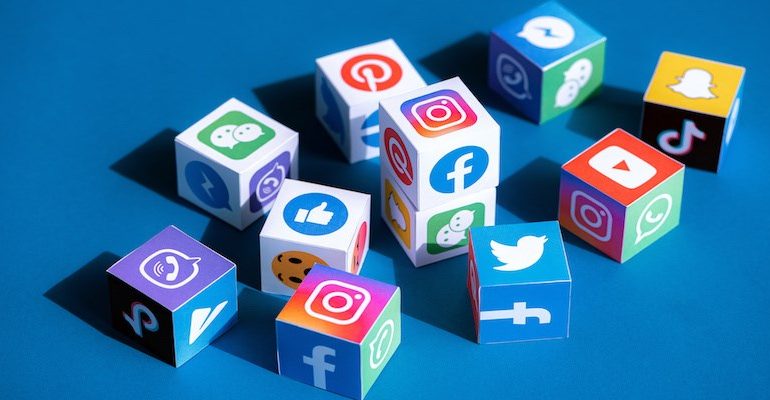By Christina Hager.
It’s the beginning of the new year, and not only that; it’s 2020, which has a particularly daunting — or awesome — ring to it, depending on how you look at it. At the start of the year, everyone is certain to rally around the traditional resolutions, like eating better, exercising more and going to bed earlier. But it’s also the time when marketing professionals, business leaders, brands and startups decide they need to get serious about their social media efforts.
Unfortunately, in their enthusiasm to get going, far too many people charge ahead without the proper strategy and support, and find themselves either without the return on investment they expected or burned out on their efforts come April.
To keep you from making those mistakes, here is a checklist for how to jump-start your social media efforts this year:
1. Start with your business goals.
What are you looking to accomplish in the first quarter? By year end? In five years?
Don’t think about what you want to accomplish on social media, but for your actual business. I find that too many organizations focus on what they want to get out of their social media, and don’t start by examining their business goals. Without articulating your business goals, you won’t know the proper next steps to take with social media.
2. Define your audience and which channels they use.
One of the biggest mistakes brands and individual thought leaders make when it comes to social media is that they think they need to be everywhere. Wrong! You don’t need to be on every single channel.
Once you’ve defined your audience (if you say your audience is “everyone,” you’re off to a bad start), you can use best practices to learn where, when and how they use social media. Don’t go to the newest channel just because it’s the latest thing — have a strategy on why you need to be there.
3. Develop a social media strategy.
Most people skip over this step, but a warning: It’s the most important part!
After you articulate your business goals and identify your target demographic, it’s time to develop a social media strategy that addresses your goals, utilizes the best channels for your demographic and articulates what you want to accomplish on each channel. Examples might include building brand identity, elevating brand awareness, distributing thought leadership or driving traffic to a website.
4. Learn best practices for each channel.
Besides knowing where your target demographic “lives” and how they use each social media channel, you must understand the best practices for each channel. This means knowing the best times to post, how to optimize a post for a particular channel and how to best use the channels.
For instance, if you are going to use Twitter, a few tweets a week won’t cut it. You will likely need two posts a day at a bare minimum — but optimally, you should aim for 10 or more! You must also use hashtags, engage with your audience and with other accounts, participate in “tweet chats,” and post a variety of content.
5. Create campaigns and build your content.
Develop social media campaigns that align with your goals. Then create pieces of content for your campaigns — and go beyond text. You’ll need photos, videos (which you can film in batches), polls, Instagram stories, etc. You should develop content that addresses your target demographic and is right for the given channel (this is something I’ve written about in a previous piece).
6. Don’t forget about curated content.
So many people get scared about social media because they think they don’t have time to create all the content they need. But don’t forget about curated content! This means content created by people you trust that is valid for your audience and their needs.
This could be YouTube videos, articles, graphics, blog posts, etc. If you are going to share it, just make sure it is relevant for your audience — don’t share it just because it’s the latest meme to go viral.
7. Create well-planned social media campaigns.
Build campaigns based on your social media goals for each channel, and include clear calls to action (CTAs). One channel might have a brand awareness campaign going, while another has a thought leadership campaign. Be deliberate about what each campaign is designed to accomplish.
8. Create a distribution schedule.
You can’t post content whenever you feel like it and hope for the best. The easiest way to keep track of your content and campaigns is by creating a content distribution schedule.
You might use an Excel spreadsheet or create an editorial calendar. Create tabs for all of the pertinent information, such as the asset or content, copy (with hashtags), date and time, channel, and image. Include both your original and curated content on this schedule.
9. Choose an execution point person.
You might utilize someone in your office, an agency or a freelancer. You can also save money by finding a savvy social media user, such as a marketing student, who will follow your content distribution calendar and post it all for you.
If you are using social media for extended customer service (which many clients expect), you will need a point person monitoring your channels and a plan for what to do when there is customer interaction on the channels.
10. Don’t forget about metrics!
All of your social media efforts can be measured. Your initial strategy should clearly define what can be measured. Decide when you are going to take those measurements, who is going to do it and which metrics are important to you.
This doesn’t just mean counting “likes.” Focus on engagement metrics like shares and comments, as well as responses to your CTA, such as a click to a website. All of this can and should be tracked for each campaign and each channel.
With these strategies firmly in mind, you’ll head into the new year on your social media A-game!
Feature Image Credit: Getty
By Christina Hager
As Head of Social Media Strategy at Overflow, I help transform individuals and brands into industry leaders.
Sourced from Forbes



